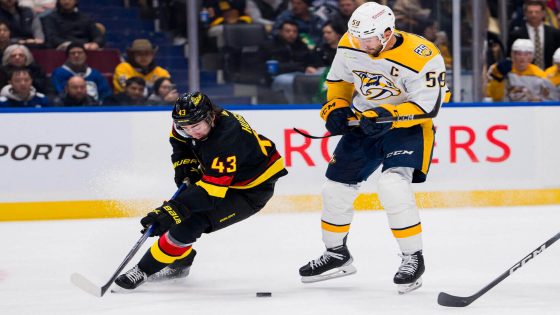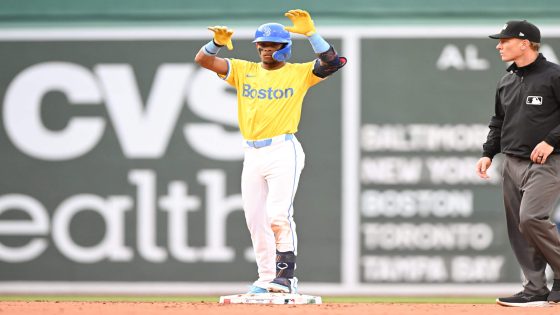Who is the best all-around defenseman in 2023-24? That is what the Norris Trophy vote will try to decipher.
By definition, the Norris is awarded to the defenseman who best demonstrates “the greatest all-round ability in the position.” But how that definition is applied varies each year and by every voter.
“It depends on who’s voting and what they feel is most important,” Oilers head coach Kris Knoblauch said.
Sometimes, it translates to the best well-rounded, two-way defenseman — Adam Fox and Cale Makar were examples of that in 2021 and 2022. But that isn’t always the case. Take last season when high-end offense was the driver behind Erik Karlsson’s win. Some years, the Norris serves as a proxy of sorts for the Hart Trophy, since defenders don’t always jump to the top of that race. And in other seasons, the most trustworthy defensive defenseman can get singled out.
While reputation and experience continue to have less of an influence on voting, there still isn’t a consistent formula year to year. So what should come into play this season and who will come out on top with the Norris Trophy?
Let’s take a closer look.
With every trophy consideration, there has to be some sort of jumping-off point for analysis. In our case, it’s an all-encompassing metric like The Athletic’s Dom Luszczyszyn’s Net Rating, as seen in this month’s Awards Watch. This single metric isn’t the end all be all, but a good start for spotting the best defensemen in the league.
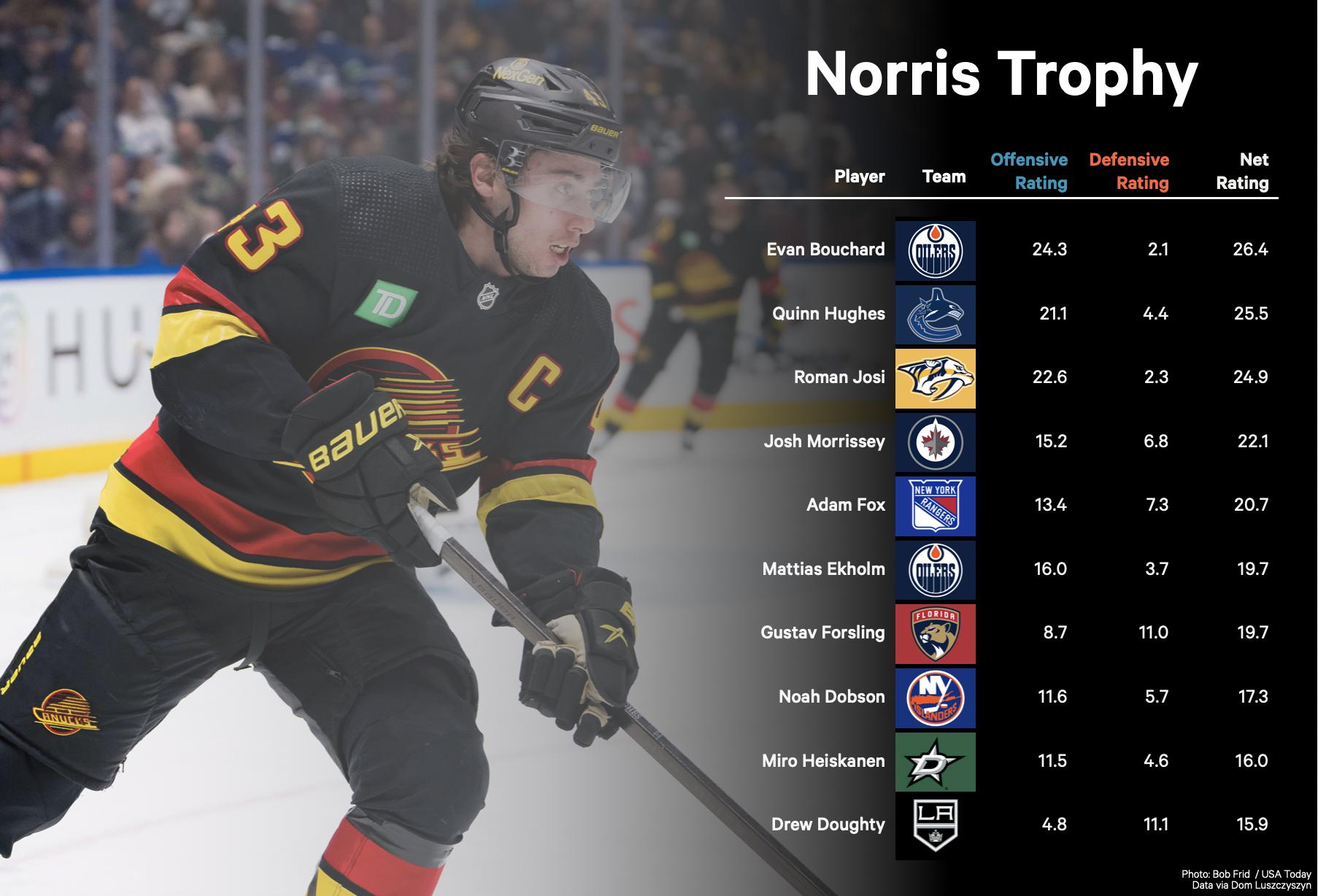
Before getting into who is on this list, there are some big-name omissions including Cale Makar, who is the second-highest-scoring defenseman this season. Makar is going to get votes — scoring 89 points will almost ensure that, as will the reputation he has built as one of the premier defenders in the league. But in reality, he has been in and out of the race for much of the season, especially after returning from injury earlier this year. He is still one of the elites but there are some concerns below the surface. One is that Makar does not have a positive influence on the team’s expected goal creation despite sharing the ice with some of the team’s best, and another is that Colorado allows more goals against in minutes. The latter contributes to a minus-1.7 Defensive Rating that holds him outside the top 10 in Net Rating.
Victor Hedman also slides out of the top 10 even though he ranks fifth in scoring among the position. Hedman has really hit his stride down the stretch, but his underlying numbers stumbled earlier in the year. Some of that may be out of his control considering how decimated Tampa Bay’s blue line is, but it is enough to separate him from other standouts this year.
Sometimes, players outside of these guidelines have a case worthy of consideration. This year, the top 10 defensemen in Net Rating make up a pretty strong field.
Evan Bouchard’s high placement on this list is fueled by a plus-22.9 Offensive Rating that leads all defensemen. Being a fixture of the Edmonton Oilers’ top power-play minutes means a lot of time with Connor McDavid and Leon Draisaitl, which ups his scoring. Two things can be true: It’s easy to chalk up Bouchard’s production to a result of his surroundings, and that production can still be impressive.
Bouchard’s contributions at least extend past the power play and to five-on-five, where he helps provide a spark from the blue line. Edmonton generates a ton of shots, scoring chances and goals in his minutes at a rate few defenders in this league can compete with. But take out that power-play time on his pot totals, and Bouchard’s scoring (34 points) matches that of his partner Mattias Ekholm, who is known for having a more well-rounded game.
But he hasn’t been the season-long favorite for this award. That honor belongs to leading scorer among defensemen Quinn Hughes. Those points alone make him a lock for the ballot.
“A guy like Erik Karlsson had 100 points. This world is a lot about points which is understandable,” Buffalo Sabres defenseman Rasmus Dahlin said. “You need the points to be able to win the Norris.”
There is more oomph behind Hughes’ offense than just scoring. It starts with his breakouts. According to Corey Sznajder’s tracking, the Vancouver Canucks defenseman leads the position with almost 13 possession exits per 60 minutes of play. Hughes brings a ton of pace to the Canucks in his minutes with his shifty play and smooth skating. He pumps up Vancouver’s shot generation in his five-on-five minutes with a ton of shots from the left point, and his puck moving leads to more in the net-front area. The Canucks’ expected goal production increases in his minutes, as does their scoring by an impressive 0.59 per 60 to lead the field.
Hughes isn’t the only high-octane defenseman making a strong case this year. Roman Josi has earned his place at the top of this race.
Josi is the backbone of the Nashville Predators offense. He tends to lead the rush into the offensive zone for Nashville and is heavily involved in their best scoring chances. He can be counted on to jump up in the offensive zone and create his own scoring chances, or quarterback play with his passing. That helps the Predators generate about 3.28 expected goals for per 60, which is 0.29 better than his teammates at five-on-five. Josi and Hughes are the drivers of their teams’ offense in their minutes, but the difference is Josi does more with less support around him. The Canucks have more scoring lines at even strength and a more potent power play.
Outside of those three offensive headliners, Adam Fox is on the next tier for his offense this year. His scoring may not stack up to that of some of the league leaders after missing 10 games, but he performed at a point-per-game pace between his role on the top power-play unit and his play driving at even strength. Josh Morrissey also has earned a nod for his offensive efforts; his ability to make stretch passes up the ice helps spring play for the Winnipeg Jets. Noah Dobson also has been a bright spot for his team, especially on the New York Islanders’ five-on-five scoring with a point on 51 percent of the goals he is on the ice for.
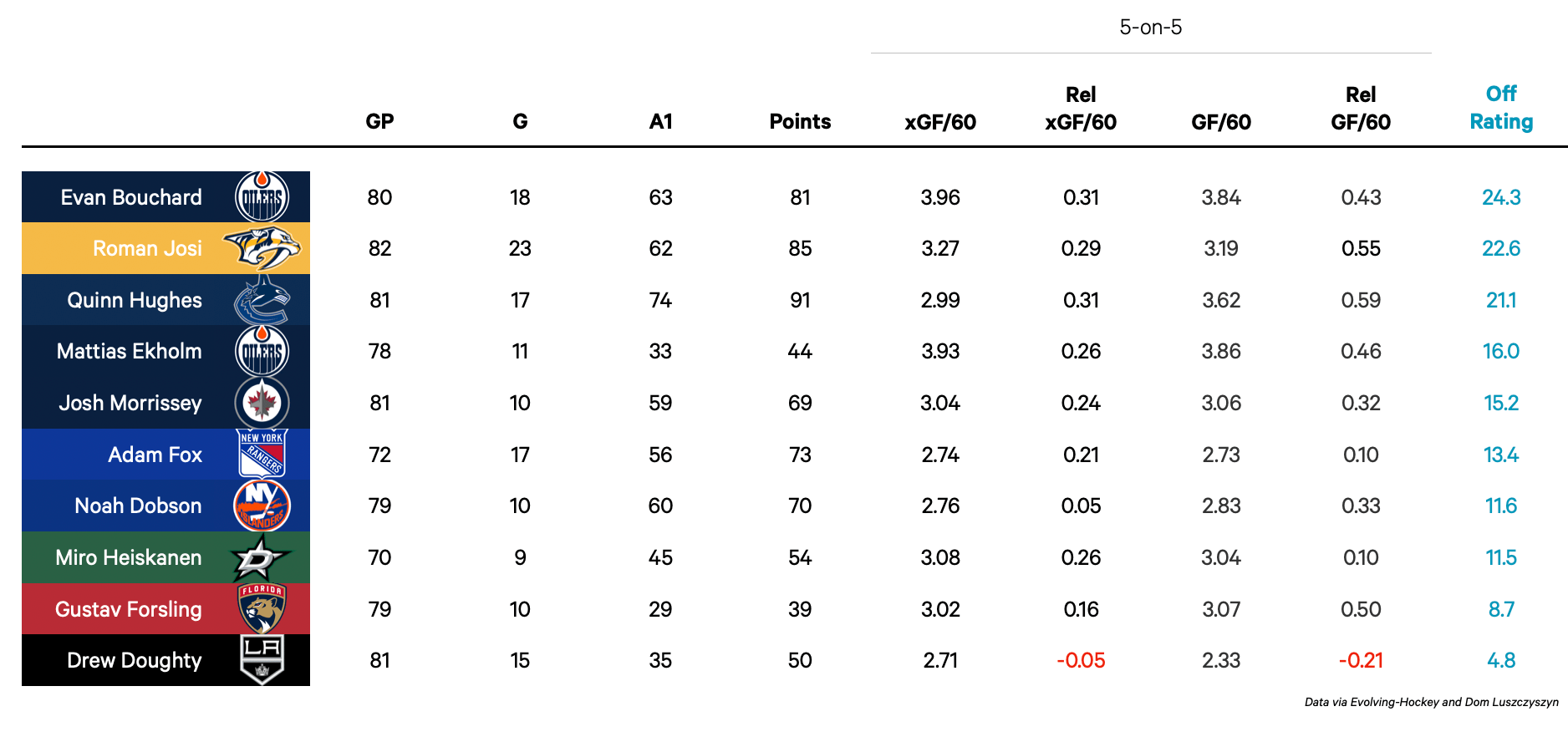
For Miro Heiskanen and Gustav Forsling, the question is just how much scoring is needed to be in the Norris conversation in today’s game. The Dallas Stars create about 0.26 more expected goals for per 60 with Heiskanen on the ice, but that hasn’t translated to the scoresheet as much as it has with some of the other contenders. Forsling isn’t a big-time point producer either, which tends to be an immediate strike against him even though he has had a positive impact in Florida. Drew Doughty adds some offense to the Los Angeles Kings, but unlike the other defenders in this race, the Kings create fewer expected and actual goals in his five-on-five minutes compared to his teammates.
Offense has become an essential part of the Norris, but it’s not everything.
“I think, in this day in age, more in the modern game, you’ve got to put up a lot of points. Obviously, we saw Erik Karlsson last year with over 100-plus points. But I think I’m kind of biased toward the Norris Trophy. You’ve got to play some good defense,” Calgary Flames defenseman Mackenzie Weegar said.
Ekholm, who is in the race this year without those high point totals, feels similarly.
“Since there’s only one award for defensemen, it should be for the most complete defenseman — offensively and defensively. It’s hard to do the offensive side, so I get why that is trumping the defense, but our number one job is to play defense,” Ekholm said. “It’s a really hard question, but I really think it should be the most complete not the most offense. The highest points shouldn’t be an automatic for you to be it. You should be able to defend at a decent level.”
Measuring defense comes with challenges, but Knoblauch pointed out two metrics to keep in mind.
“Plus-minus and expected goals for. Those are two very similar things. If you just go by plus-minus, often those (numbers) get skewed by luck — the wrong time for being on the ice and having no impact on it (a goal against),” Knoblauch said. “But those two go hand in hand. They’re very important.”
Plus-minus is flawed because almost all of these defenders are deployed in those game-breaking situations like five-on-six and six-on-five play. But none of these 10 defensemen have a negative goal differential at five-on-five. On-ice expected goals are leaned on heavily here, in tandem with actual goals, as a proxy for scoring chance limitation.
This is where defenders like Forsling and Doughty gain more traction for their shutdown play. Despite workloads against top competition, they help limit quality chances against relative to their teammates and are on the ice for fewer five-on-five goals.
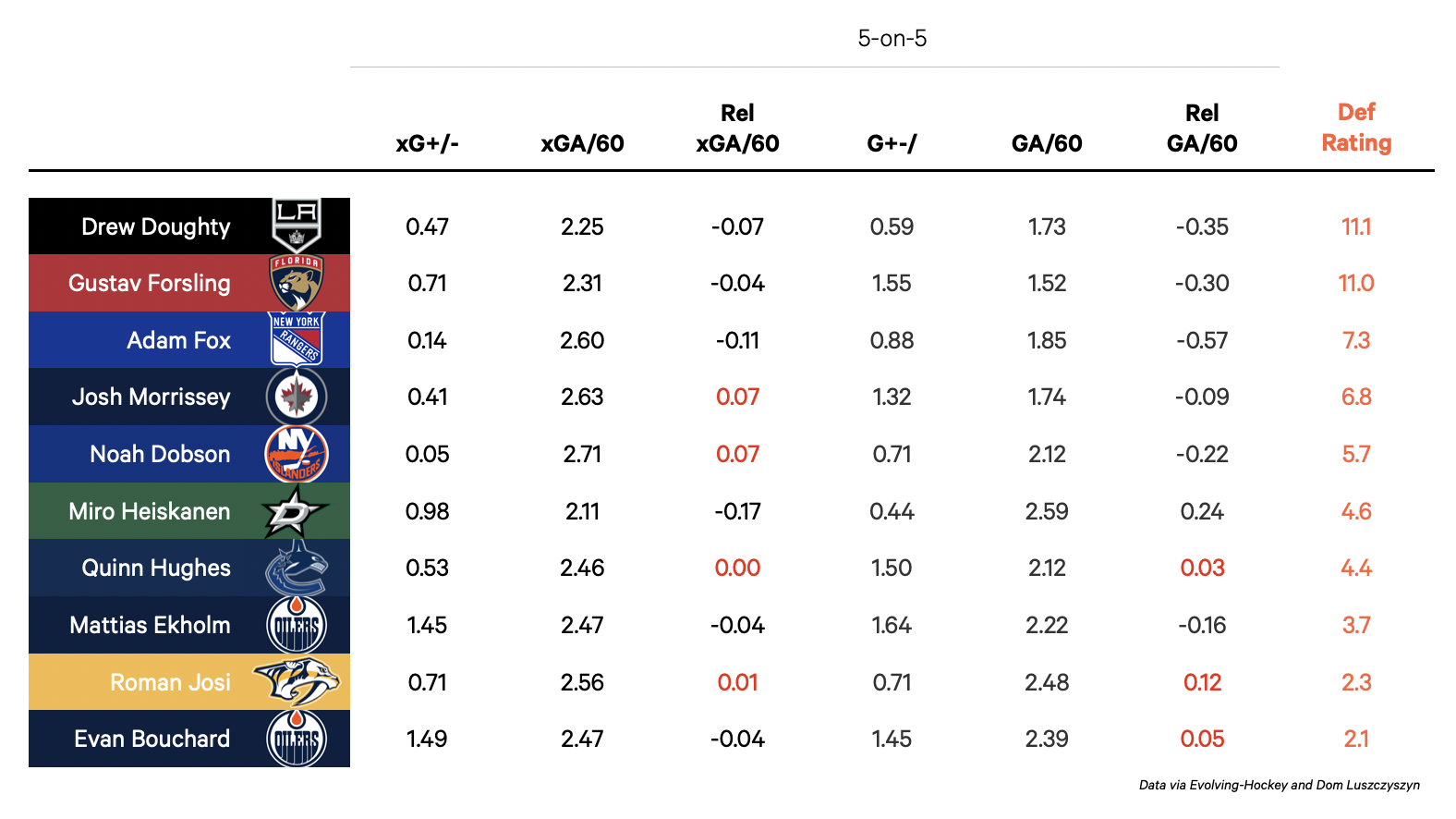
Fox doesn’t fit the mold of a traditional shutdown defenseman like Forsling, but he is sound in his own zone thanks to his progressive play. The New York Rangers allow 0.11 expected goals and 0.57 goals per 60 fewer with Fox on the ice relative to his teammates at five-on-five, which leads the field. Some of that stems from his poise and ability to shift from defense to offense. That has become a pivotal part of being a complete threat in today’s game. Instead of just blocking shots and hitting, defensemen can use their positioning and anticipation to regain control and push play up the ice. It’s something Heiskanen thrives at in Dallas; he is one of the best defensemen at retrieving pucks and exiting the zone with control in the league even when matching up against top competition. Dobson has stacked up well in his breakout season, and it’s been a part of Morrissey’s success as well.
That proactive style is what pushes Hughes and Josi to control play in their minutes.
Hughes and Josi are neck and neck defensively in terms of relative impact on their teams’ expected goal suppression at five-on-five. But Josi is on the for more goals against while Hughes has a plus-37 five-on-five goal differential, which is third best in the league. That defensive advantage could be what earns Hughes the votes to finish just ahead of Josi.
Defense is where things get interesting for Bouchard, the other high scorer of the field. His scoring alone deserves praise and will lead to consideration on the ballot.
“I mean, it’s hard to put up that many points. That’s impressive when you put up a lot of points.” St. Louis Blues defenseman Colton Parayko said. “For a D-man, you’re dynamic if you’re putting up that (offensive production).”
But the other side of the game is where Bouchard is more ripe for criticism, especially since some of his gaffes have led to glaring defensive breakdowns and goals against. Where he ranks all depends on how much his game is valued versus his partner’s influence. As tricky as it is to isolate just one half of a pair that has played upward of 80 percent of their five-on-five minutes together, it’s fair to say Ekholm has been the stabilizing force on it over the last year. That shouldn’t take either defenseman out of the conversation — where Bouchard and Ekholm ultimately fall will depend on who voters view to be the true driver of that pair — but it should knock them out of the running for that coveted No. 1 finish.
For someone to be named the most complete defenseman, usage is another consideration.
Bouchard, Josi and Hughes don’t see a ton of short-handed minutes. Neither does Heiskanen at just 15 percent of the Stars’ minutes on the penalty kill. Sometimes that deployment is less of an indictment on caliber play and more about maximizing their minutes.
What they lack in short-handed time they make up for in power-play minutes, and the opposite is true for Ekholm and Forsling. But only being leaned on for one special teams situation should not hold back someone’s case, according to Parayko.
“PK is a little tougher because those are hard minutes, but I think the power play is still not easy minutes. You’ve still got to make the right play and play with the right personnel. I think both ways are equally as hard, they’re just different,” Parayko added.
Outside of the power play or penalty kill, most importantly, these players are leaned on in high-leverage situations — something the best defensemen in the league should be tasked with.
To win the Norris Trophy, “you have to dominate out there,” Dahlin said.
This year, the field is deep with defensemen who dominate play. Hughes and Josi rise to the top and are so closely matched in this tight race. Those two are unquestionably leading the way, with solid options to round out the ballot like Morrissey and Fox, who are both putting up strong complete performances; a shutdown defenseman like Forsling who has some dimension; and the Oilers’ top pair, among others.
Unlike in years past, the Norris Trophy isn’t trending toward being a proxy for the Hart Trophy votes defensemen usually do not get. It isn’t just a scoring race, either. There are different ways to evaluate the best all-around defenseman and this year, there is a full class of players who capture that in their own way.
Julian McKenzie, Daniel Nugent-Bowman, Matt Fairburn, and Jeremy Rutherford contributed to this story. Data collected prior to Wednesday night’s matchups via Evolving-Hockey, HockeyViz, HockeyStatCards, AllThreeZones and NaturalStatTrick. This story relies on shot-based metrics; here is a primer on these numbers.
(Top photo of Quinn Hughes and Roman Josi: Bob Frid / USA Today)
